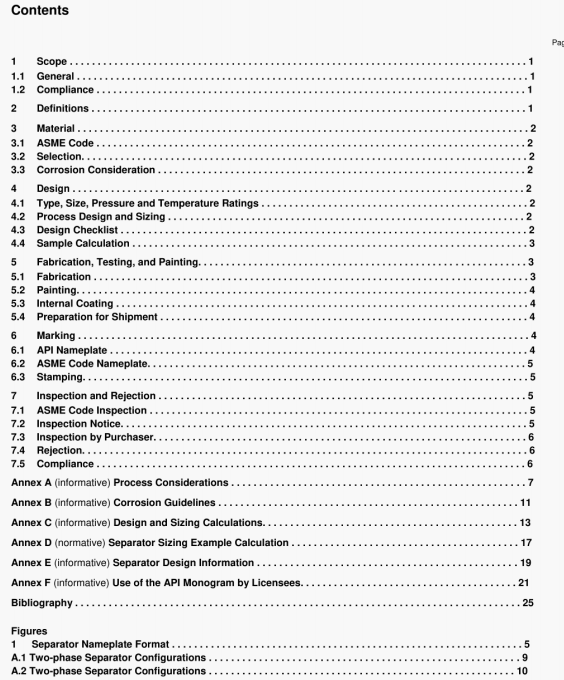API Spec 12J:2008 pdf download.Specification for Oil and Gas Separators.
This specification covers minimum requirements for the design, fabrication, and shop testing of oil-field type oil and gas separators and/or oil-gas-water separators used in the production of oil and/or gas, and usually located but not limited to some point on the producing flowline between the wellhead and pipeline. Separators covered by this specification may be vertical, spherical, or single or double barrel horizontal.
Unless otherwise agreed upon between the purchaser and the manufacturer, the jurisdiction of this specification terminates with the pressure vessel as defined in the Scope of Section VIII, Division 1 of the ASME Boiler and Pressure Vessel Code, hereinafter referred to as the ASME Code. Pressure vessels covered by this specification are normally classified as natural resource vessels by API 510, Pressure Vessel Inspection Code. Separators outside the scope of this specification include centrifugal separators, filter separators, and de-sanding separators.
1.2 ComplIance
Any manufacturer producing equipment or materials represented as conforming with an API specification is responsible for complying with all the provisions of that specification. API does not represent, warrant or guarantee that such products do in tact conform to the applicable API standard or specification.
2 Definitions
The separation of gas and liquids primarily relies on physical differences in the phases. This section covers mechanical separation of liquids and gases. A separator vessel may be referred to as a knockout, trap, scrubber, flash chamber, or expansion vessel as well as the original term. This terminology is applied regardless of shape. Generally. the following definitions are regarded as basic.
corrosion
The destruction of a metal by chemical or electrochemical reaction with its environment (see Annex B).
2.2
tree water knockout
A type of separator vessel used to separate free water from a flow stream of gas, oil, and water.
NOTE The gas and oil usually leave the vessel through the same outlet to be processed by other equipment. The water is removed for disposal.
2.3
maximum allowable working pressure
MAWP
The maximum pressure, permissible by the ASME Code, at the top of the separator in its normal operating position for a designated temperature.
2.4
operating pressure
The pressure in the vessel during normal operation, not to exceed the MAWP, and usually kept at a suitable level below the setting of the pressure relieving devices to prevent frequent opening (see Annex A).
API Spec 12J:2008 pdf download
